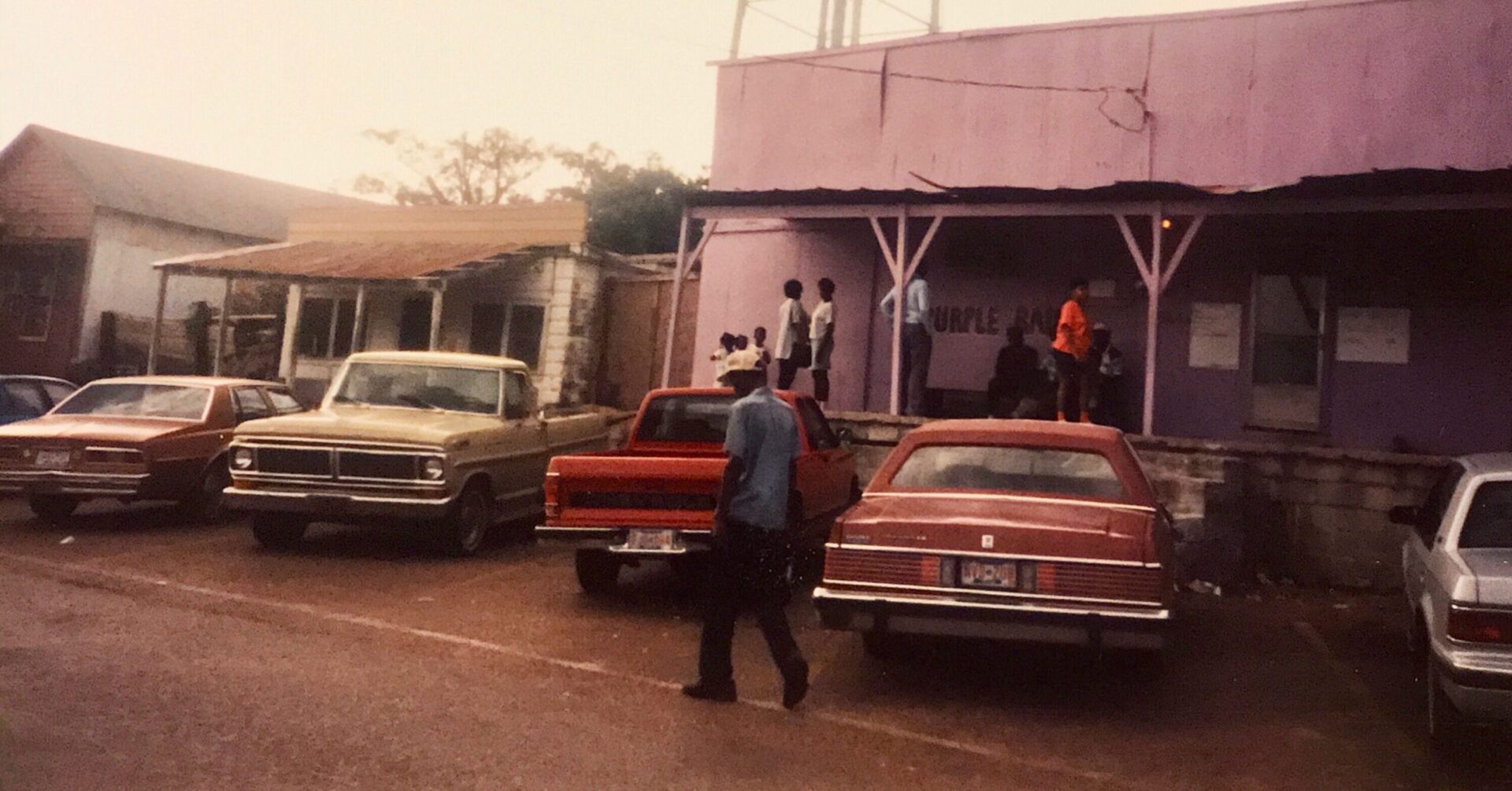






















































Originally, I was to have headed out to New Orleans on Saturday, which would have enabled me to go to Houma for a parade with my homeboys in the To Be Continued Brass Band, but I was still under the weather on Saturday, and so I decided not to head out until the next day which was Sunday. And although I felt better Sunday morning, I was still not exactly well yet. But I decided to leave out early in the morning, and to head across the Delta, down Highway 61 and Highway 1, in the hopes of finding some pictures worth taking, and although it was a grey and dismal day, I did have some success in that regard. Taking Highway 1 from Lula brought me through some communities that really were headquarters for some of the large plantations, which almost always nowadays are called “farms.” The first one I came to was a community called Stovall, where there was an abandoned store. The Stovalls were a prominent family in Coahoma County, and Muddy Waters had once lived on their land. As I photographed the old brick store, I wondered how many times Muddy Waters had been inside it. The old Stovall home was to the right, near the river, but I didn’t recognize it as such because it had been renamed Seven Chimney Farms. The house actually does have seven chimneys, and seems to be in the process of being restored. Further down was a community called Sherard, which, if the store is to be believed, dates from 1874. The place consisted of the abandoned store, several elegant houses in a grove of trees, a church, and some smaller houses along the highway. At Rena Lara, I stopped for a soft drink at the Great River Road Store, which I was surprised to see serves also as a bar, pool hall and on weekends, upscale restaurant with steaks. I made a mental note to come back some Friday or Saturday to try the steaks. Perthshire was the next community I came to, and like some of the others, it appeared to be the headquarters for a farm, which I learned had been the Knowlton Plantation. What was once a company store was clearly evident on the little street that paralleled the highway. I could make out a rather elaborate house at the end of the east-west street off the highway, but it seemed to be at the end of a long private drive, so I photographed only a glimpse of it from the public street. Gunnison was the first town of any size that I came to along Highway 1, and I was eager to photograph there, as I had once seen some interesting-looking jukes there, and had failed to photograph them because of the groups of young men standing around outside them that I feared would object. Unfortunately, there was not nearly as much to be seen in Gunnison nowadays. One of the jukes from my visit years ago had turned into a motorcycle club, and there was no trace of the other. A club I didn’t recall from the past was operating on a side street, with a fair number of cars in front of it, but it had no signage whatsoever, and was operating more or less I suppose under the table. A well-preserved and still open vintage service station on Highway 1 was perhaps the best find in the little town. Beulah was even more desolate than Gunnison had been, although I found a few old downtown structures to photograph. Benoit had the Last Call Bar and Grill, with the words “Mississippi” and “Blues” on its side for good measure, and just to the south was the Monsanto-owned company town of Scott, Mississippi, with its beautiful setting between Lake Bolivar and Deer Creek. Scott had been the headquarters town for the Delta Pine and Land Company, which was once the largest cotton plantation in the world. D P & L was later acquired by Royal Dutch Shell for a period of time, before it was sold to Monsanto in St. Louis. Scott is laid out around a peaceful square across from the large building that houses the post office and which must have once been the company store. There is now an upscale restaurant called Five O’Clock On Deer Creek which is located on the main road, adjacent to the creek. Down from there, I passed through decrepit communities called Lamont and Winterville and into the city of Greenville, where I decided to stop for a lunch. Greenville has a Frostop location, and there I had quite a delicious bacon cheeseburger. From there I made my way to Highway 61 at Arcola, and took pictures there, in Estill, where there was an old collapsing wooden church which looked historic, in Hollandale, at Panther Burn, and in the old ghost town of Nitta Yuma, which is being carefully preserved by the descendants of the family that founded it. Past there, I basically ran out of light, and headed on into Jackson, and down to McComb, where I stopped for dinner at a Santa Fe Steak House, before continuing my journey down to New Orleans.
Founded 1963 Relaunched 2019. The Postmodern South.
